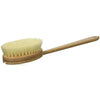Is it a cold or the flu?

If your holiday or New Year’s celebrating was cut short because you were under the weather, you have our sympathies.
We are fully underway of the annual cold and flu season, which typically runs from November to February with peak sickening activity between December and February in the United States. However, you can be sidelined with a cold or flu virus any time of the year.
Both the common cold and flu are viral infections that affect the respiratory tract. But it’s important to note that each illness is caused by a different virus, and within each category (cold or flu-causing) there are several genetically different viruses to contend with. The prevalence of circulating viruses is constantly changing and new ones are still being discovered.
Both illnesses have similar symptoms so it can be difficult to determine which one you have and the best course of treatment.

Source: Centers for Disease Control and Prevention
Symptoms of the common cold
If you’ve got a common cold, your symptoms are usually milder than if you have the flu. Common cold symptoms include sneezing, stuffy or runny nose, sore throat, cough and chest congestion, and they typically come on more gradually than flu symptoms.
The common cold isn’t likely to develop into more serious illness, but it’s still no pleasure to deal with.
A cold can be caused by one of more than 200 different viruses with the most predominant offender being the rhinovirus. This aptly named virus is prolific in temperatures of 91-95 degrees F (33-38 degrees C), temperatures often found in the nose.
Symptoms of the flu
The flu is typically more intense than a cold. Common symptoms of the flu include fever, headache, body ache, chills, cough, and fatigue. But don’t rule out nasal congestion or sore throat either.
The onset of flu symptoms tends to be abrupt, so don’t be surprised if you go from fine to bedridden within a matter of hours.
The flu can progress into pneumonia in some individuals and may require hospitalization in severe cases. The CDC estimates that between 140,000 and 960,000 flu-related hospitalizations occur each year.
How can you tell for sure what you have?
If your symptoms leave you guessing, your doctor can order one of several lab tests if he/she can’t diagnose it based on symptoms alone. The most common test is called a rapid influenza diagnostic test (RIDT) that detects the antigens capable of stimulating an immune response. A bit more accurate is the rapid molecular assay that detects a virus’s genetic material. Both test produce results within 20 minutes. Or your doctor may elect to take a swab from inside the nose of the back of the throat and have the sample analyzed by a specialized laboratory for better precision, but the results aren’t as speedy.
No matter what your doc says - or even if you self-diagnose - make an effort to curtail your symptoms immediately. You will have to ride it out, though, as there is no quick fix cure for colds and seasonal flu.
General remedies for cold and flu symptoms
Follow these general guidelines to get you on the road to recovery:
Get adequate rest and avoid strenuous activity. You may be achy and lethargic, so listen to your body. Take it easy until you’re feeling better.
Drink plenty of fluids, preferably hot tea or water. Alcohol and sugary drinks are not what your body needs when your immune system is down.
For nasal congestion, use a saline solution to irrigate the nasal passage .
Don't forget a wealth of vitamin and herbal supplements that support the immune system. We happen to have a few formulas for cold and flu symptoms. Our top favorites are Airways Respiratory & Immune Defense and Wellness Warrior.
Maintaining respiratory health can be difficult in the face of seasonal changes. Airways provides synergistic herbal support for the immune and upper respiratory systems, helping to restore health to mucosal tissues of the lungs and sinuses. When times call for the big guns, take up to four capsules every four hours.
Monolaurin and humic acid featured in Wellness Warrior weaken the membrane of invading pathogens such as viruses and bacteria. This allows the immune system to neutralize the harmful cells and prevent further replication. Take one capsule daily for preventative purposes and increase to up to 4 capsules every four hours at the first sign of cold and flu symptoms.
What not to do
Don’t take antibiotics for a cold or flu! They do not work on viruses and they destroy your good intestinal bacteria. Healthy populations of probiotic bacteria in the gut empower the immune system. A healthy immune system is what keeps you from getting sick in the first place.
Practice these tips for cold and flu prevention to sail through the rest of the season
1 comment

November 29, 2025
Newest Research Continues to Show that Mistletoe may be a Potent Cancer Treatment
For over a century, mistletoe extracts have occupied a fascinating place in cancer care, particularly across Europe. What began as an anthroposophical remedy has evolved into a subject of serious scientific inquiry, with recent researc...
Read more
November 29, 2025
Dr. Hulda Clark's Cancer Theory: The Parasitic Origin of Oncogenic Factors
Dr. Hulda Clark, a naturopath whose work has gained attention in alternative health circles, has developed a distinctive theory about cancer causation that differs markedly from conventional medical understanding. Her hypothesis wea...
Read more
November 29, 2025
Top 5 Mushrooms with Health Benefits
For thousands of years, medicinal mushrooms have held an esteemed place in traditional Asian medicine. Today, cutting-edge scientific research is validating what traditional practitioners have long known: these fascinating fungi possess...
Read more




Am impressed with your site materials.
They are term “simple and straight forward”.
Thank you.
How to get your new posts everyday?
Leave a comment